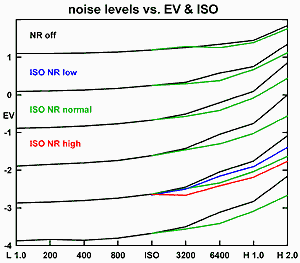
Select a pre-defined camera from the Camera Type Drop down list.

It must be remembered that while such calculators are useful it is of course, recommended, where possible, to demo cameras under the real-world experimental conditions. The data may be exported as a csv file for further analysis. This calculator tool lets you select and compare selected camera models and adjust options such as exposure time. Signal to Noise is an important parameter that can be used to compare how a camera may perform compared to another model or under different conditions. Different kinds of sensor can also cover the UV spectrum or, on the opposite side, near infrared light, before going to drastically different technology for far wavelengths such as SWIR or LWIR.Signal to Noise Ratio & Noise Exposure Calculator Machine vision systems, usually based on CCD or CMOS cameras, detect light from 350 to 900 nm, with the peak zone being between 400 and 650 nm. Human eyes have three different kinds of photoreceptors that differ in sensitivity to visible wavelengths, so that the overall sensitivity curve is the combination of all three. Spectral sensitivity is the parameter describing how efficiently light intensity is registered at different wavelengths. Using a sensor with higher grey levels would mean registering a certain degree of pure noise. For example, if the maximum SNR is 50 dB, a good choice is a 8 bit sensor, in which the 256 grey levels corresponds to 48 dB. SNR gives a limit on the grey levels that are meaningful in the conversion between the analog signal (continuous) and the digital one (discrete).

This range, though, cannot be used simultaneously, since the eye needs time to adjust to different light conditions.Ī good quality LCD has a dynamic range of around 1000:1, and some of the latest CMOS sensors have measured dynamic ranges of about 23000:1 (reported as 14.5 stops). Human eyes, for example, can distinguish objects both under starlight and on a bright sunny day, corresponding to a 90 dB difference in intensity. The dynamic range is usually expressed by the logarithm of the min-max ratio, either in base-10 (decibel) or base-2 (doublings or stops), as shown below. At the upper limit, pixels appear to be white for every higher value of intensity (saturation), while pixels appear black at the lower limit and below. Sensitivity is strictly connected to quantum efficiency, that is the fraction of photons effectively converted into electrons.ĭynamic range is the ratio between the maximum and minimum signal that is acquired by the sensor. Sensitivity is a parameter that quantifies how the sensor responds to light. This is an example of ‘constant noise’ that can be measured and eliminated.

When light intensity is very low - as it is considering the small surface of a single pixel – the relative fluctuation of the number of photons in time will be significant, in the same way as the heads or tails probability is significantly far from 50% when tossing a coin just a few times. Shot noise is a consequence of the discrete nature of light.They can be caused by either geometric, physical and electronic factors, and they can be randomly distributed as well as constant. There are several types of noise that can affect the actual pixel readout.


 0 kommentar(er)
0 kommentar(er)
